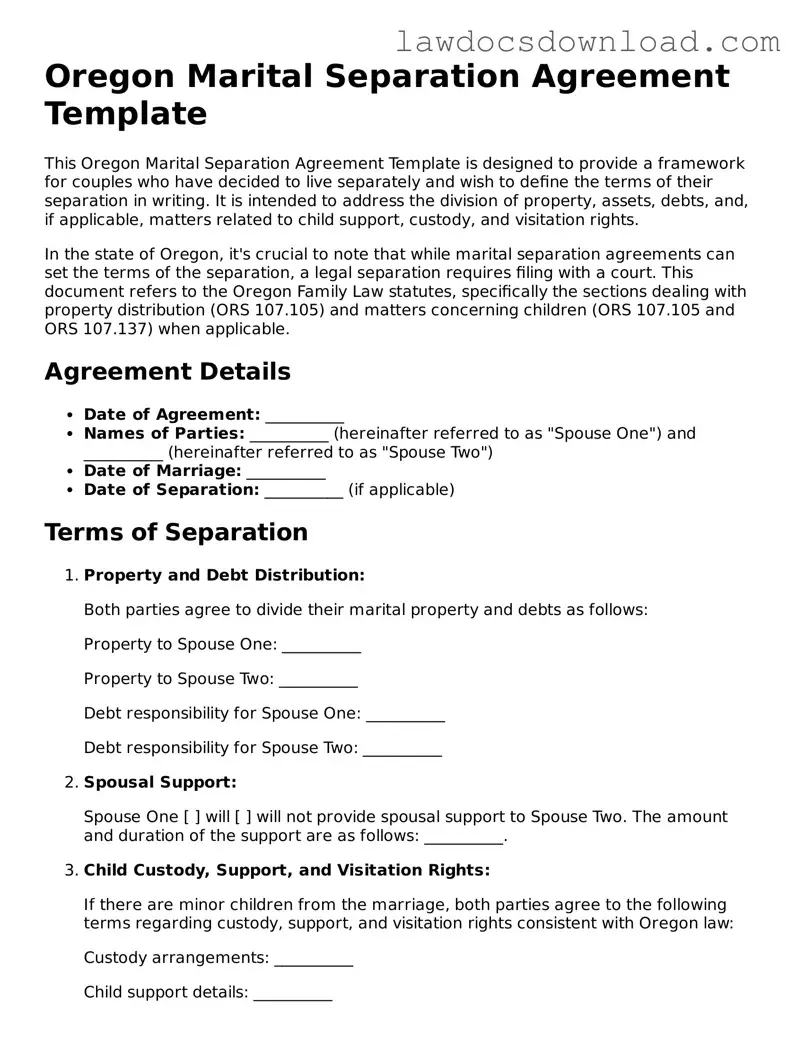In the state of Oregon, when couples decide to separate, they may choose to fill out a Marital Separation Agreement form. This document, crucial for outlining the terms of the separation, often includes provisions for property division, child support, custody, and spousal support. However, individuals frequently make mistakes when completing this form, potentially leading to future disputes or complications.
One common mistake is not providing complete and accurate information about financial assets. Many individuals either unintentionally overlook or deliberately omit details about their financial situation. This oversight can lead to an unfair division of assets or issues with spousal or child support calculations.
Another error involves misunderstanding the legal implications of the agreement. Some individuals fail to comprehend that once the agreement is signed and approved by a court, it is legally binding. This misunderstanding can result in individuals agreeing to terms that are unfavorable or difficult to abide by in the long term.
People often forget to consider the tax implications of their decisions when dividing property or agreeing on support payments. Such oversight can result in unexpected tax liabilities for one or both parties. Consulting with a tax professional before finalizing the agreement is advisable to avoid such pitfalls.
Moreover, couples sometimes neglect to specify the terms for future modifications of the agreement. Life circumstances can change, necessitating updates to support, custody, or division of assets. Without a pre-defined process for these amendments, making necessary adjustments can be challenging.
Another frequent mistake is failing to include a detailed parenting plan when children are involved. Providing a clear, comprehensive plan that covers custody arrangements, visitation schedules, and decision-making processes can prevent conflicts and misunderstandings in the future.
Some individuals attempt to fill out the form without legal assistance. While this approach may seem cost-effective, it can lead to errors or omissions that might have significant legal consequences. Consulting with a lawyer, even if only for a review of the completed form, can help ensure that the agreement is sound and legally enforceable.
Failing to address retirement accounts and pensions is another common oversight. These assets require careful handling in separation agreements, including specific legal language to divide them without incurring penalties or unintended tax consequences.
Similarly, individuals often incorrectly believe that the marital separation agreement can address issues related to the future marriage of either party, such as prenuptial agreements for subsequent marriages. However, these are separate legal matters that should be addressed in separate documents.
Finally, couples sometimes include punitive clauses aimed at penalizing the other party for perceived wrongdoings. Such provisions are not only unenforceable but can also lead to the entire agreement being invalidated by a court. A marital separation agreement should focus on equitable division and arrangements, not punishment.
